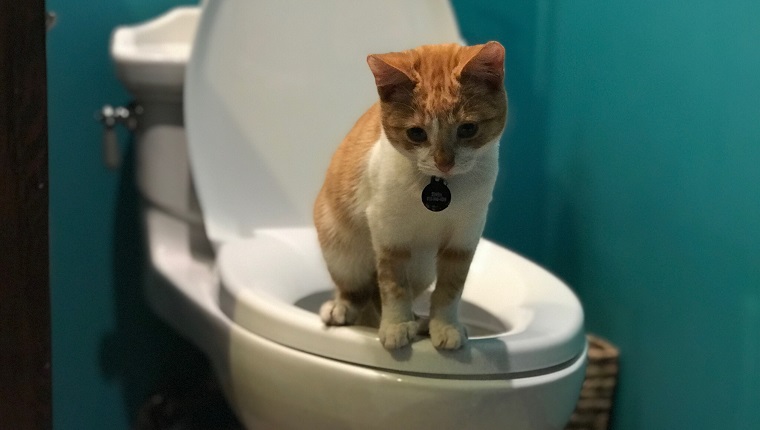Hazards of Flushing Cat Poop Down Your Toilet - Avoid Potential Issues
Hazards of Flushing Cat Poop Down Your Toilet - Avoid Potential Issues
Blog Article
Everybody is bound to have their own theory on the subject of How to Dispose of Cat Poop and Litter Without Plastic Bags.

Introduction
As cat proprietors, it's important to be mindful of how we get rid of our feline buddies' waste. While it may seem practical to flush cat poop down the toilet, this method can have destructive effects for both the setting and human health and wellness.
Ecological Impact
Flushing pet cat poop presents harmful pathogens and bloodsuckers into the water, presenting a substantial threat to aquatic ecological communities. These impurities can adversely affect marine life and compromise water high quality.
Wellness Risks
In addition to environmental worries, flushing feline waste can also position wellness risks to people. Feline feces might have Toxoplasma gondii, a bloodsucker that can trigger toxoplasmosis-- a potentially extreme illness, specifically for pregnant ladies and individuals with weakened body immune systems.
Alternatives to Flushing
Thankfully, there are more secure and more liable ways to throw away cat poop. Consider the adhering to alternatives:
1. Scoop and Dispose in Trash
One of the most usual method of disposing of cat poop is to scoop it right into an eco-friendly bag and throw it in the garbage. Make sure to utilize a dedicated clutter inside story and throw away the waste immediately.
2. Usage Biodegradable Litter
Choose eco-friendly feline clutter made from materials such as corn or wheat. These clutters are environmentally friendly and can be securely disposed of in the garbage.
3. Bury in the Yard
If you have a lawn, consider burying pet cat waste in a marked location away from veggie yards and water sources. Be sure to dig deep enough to avoid contamination of groundwater.
4. Set Up a Pet Waste Disposal System
Invest in a family pet waste disposal system especially made for pet cat waste. These systems make use of enzymes to break down the waste, lowering smell and ecological impact.
Final thought
Liable pet dog ownership extends beyond supplying food and sanctuary-- it also involves proper waste administration. By avoiding purging pet cat poop down the commode and going with alternate disposal approaches, we can minimize our ecological footprint and safeguard human wellness.
Why Can’t I Flush Cat Poop?
It Spreads a Parasite
Cats are frequently infected with a parasite called toxoplasma gondii. The parasite causes an infection called toxoplasmosis. It is usually harmless to cats. The parasite only uses cat poop as a host for its eggs. Otherwise, the cat’s immune system usually keeps the infection at low enough levels to maintain its own health. But it does not stop the develop of eggs. These eggs are tiny and surprisingly tough. They may survive for a year before they begin to grow. But that’s the problem.
Our wastewater system is not designed to deal with toxoplasmosis eggs. Instead, most eggs will flush from your toilet into sewers and wastewater management plants. After the sewage is treated for many other harmful things in it, it is typically released into local rivers, lakes, or oceans. Here, the toxoplasmosis eggs can find new hosts, including starfish, crabs, otters, and many other wildlife. For many, this is a significant risk to their health. Toxoplasmosis can also end up infecting water sources that are important for agriculture, which means our deer, pigs, and sheep can get infected too.
Is There Risk to Humans?
There can be a risk to human life from flushing cat poop down the toilet. If you do so, the parasites from your cat’s poop can end up in shellfish, game animals, or livestock. If this meat is then served raw or undercooked, the people who eat it can get sick.
In fact, according to the CDC, 40 million people in the United States are infected with toxoplasma gondii. They get it from exposure to infected seafood, or from some kind of cat poop contamination, like drinking from a stream that is contaminated or touching anything that has come into contact with cat poop. That includes just cleaning a cat litter box.
Most people who get infected with these parasites will not develop any symptoms. However, for pregnant women or for those with compromised immune systems, the parasite can cause severe health problems.
How to Handle Cat Poop
The best way to handle cat poop is actually to clean the box more often. The eggs that the parasite sheds will not become active until one to five days after the cat poops. That means that if you clean daily, you’re much less likely to come into direct contact with infectious eggs.
That said, always dispose of cat poop in the garbage and not down the toilet. Wash your hands before and after you clean the litter box, and bring the bag of poop right outside to your garbage bins.
https://trenchlesssolutionsusa.com/why-cant-i-flush-cat-poop/

I am just very intrigued by How to Dispose of Cat Poop and Litter Without Plastic Bags and I'm hoping you enjoyed reading our blog entry. Feel free to take the time to distribute this post if you enjoyed it. Thanks a lot for your time. Don't hesitate to come by our website back soon.
Visit My Site Report this page